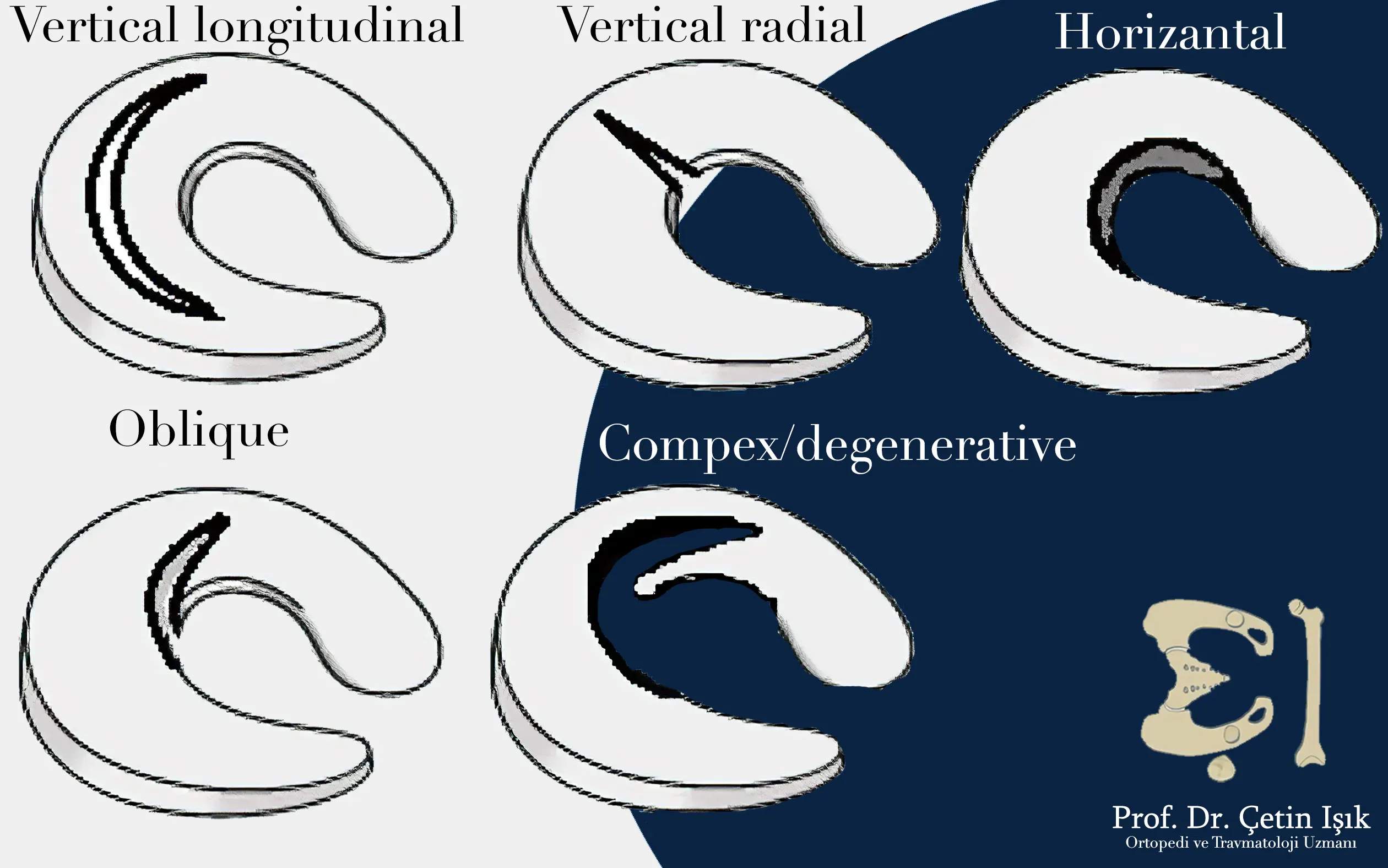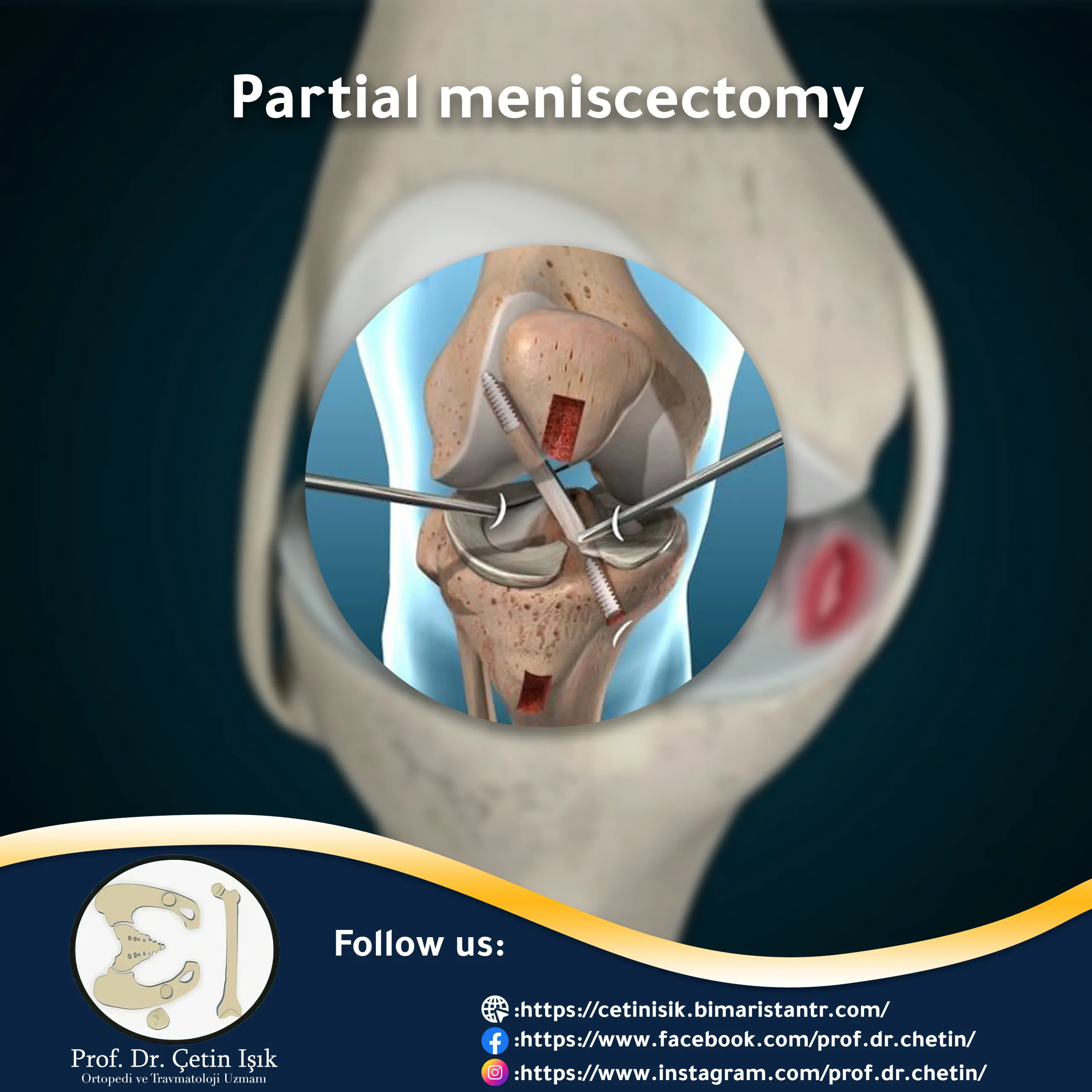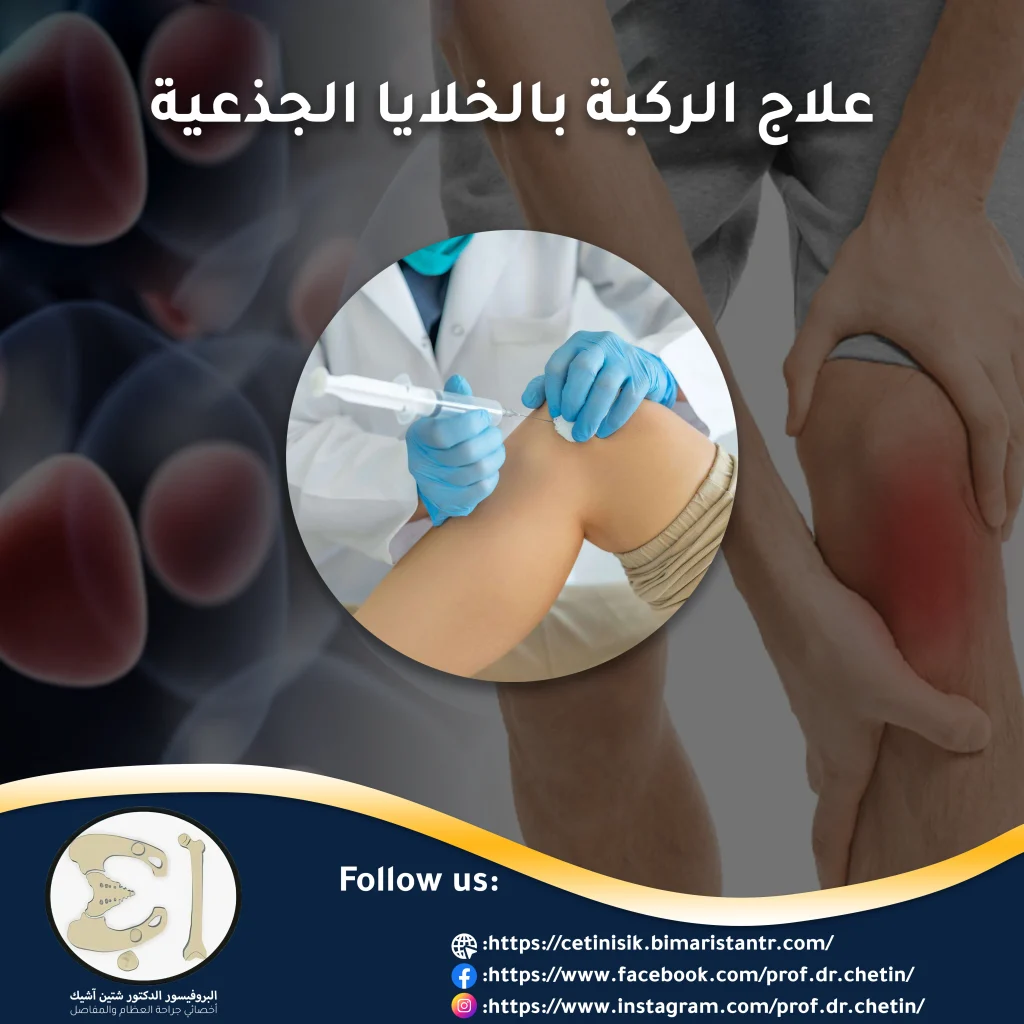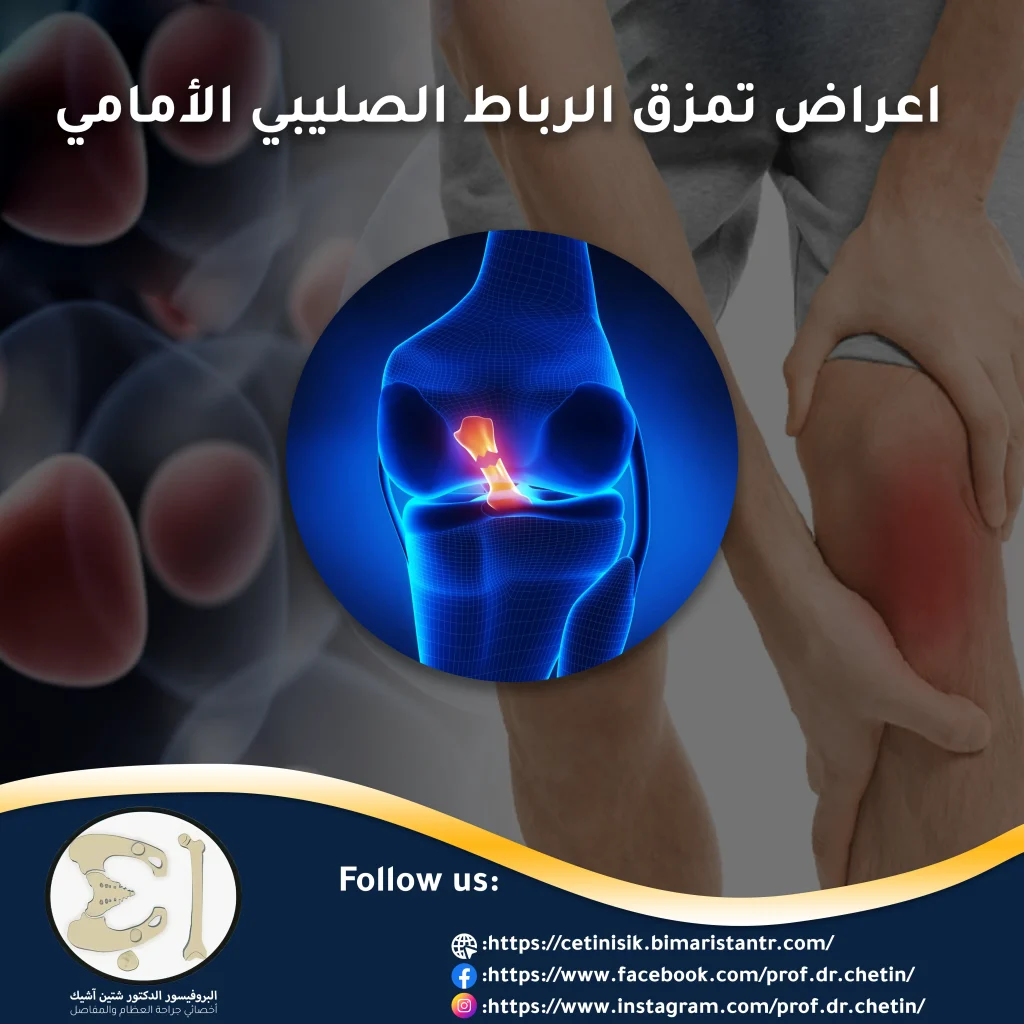Meniscus resection is a quick and safe procedure that partially repairs a meniscus tear and provides the knee with a better range of motion with less pain.
What partial meniscectomy in the knee?
It is the most common surgical procedure in which the torn meniscus is repaired, which is one of the most critical cartilages within the knee joint. In the procedure an arthroscopic surgical incision is usually made to diagnose and treat the damage or injury with the specialized endoscope within a specialized clinic or hospital.
16% of women over the age of 50 suffer from degenerative joint and cartilage problems, while the percentage may reach 50% among elderly men over the age of 70. Although the rate of cartilage problems is high, they do not always cause symptoms.
When the specialized orthopedic surgeon began in the last century to perform meniscal cartilage operations, it was not taken into account that these cartilages have a significant role. As a result, the cartilage was completely or almost completely removed in most operations.
In the short term, the results were impressive. Still, it was later found that these operations in young people can raise the incidence ofOsteoarthritis. Significantly, conservative surgical techniques have been developed that aim to remove only the diseased part and repair the cartilage rather than removing it unless necessary.
meniscus cartilages
In fact the meniscus plays an important role in the body by distributing the weight in a homogeneous manner on both legs, in addition to having a motor function by helping muscles and bones while walking to maintain balance. In every knee there are two meniscal cartilages, medial or proximal, and the other is lateral or distal.

The meniscal cartilages of the knee have a distinct structure and are divided into three regions:
- Outer red region: Its blood supply is abundant, and this matter is of importance to the cartilage and its processes, as it is sometimes preferable to repair it by laparoscopy instead of removing part of it.
- Red and white middle region: A transitional zone with less perfusion and contains horizontal collagen fibers that give the knee joint strength during pressure and exposure to external stimuli.
- White inner region: The most important thing is that it does not contain blood vessels at all and derives its nourishment from the synovial fluid. It may suffer serious injuries that require medical and surgical intervention before its fibers are damaged.
medial meniscus
It is crucial in surgery andarthroscopic procedures because it is more stable than its lateral counterpart and has the shape of the letter C, while the lateral cartilage has the shape of the letter U. The ligaments in the knee and its capsule are in direct contact with this cartilage, while the cartilaginous tissue of the opposite side is not attached to it.
Difference between cruciate ligament and meniscus
The main difference lies in the function and type of knee injury:
- Cruciate ligament: It is a group of fibers running in the middle of the knee joint and it is on the posterior and anterior bundles. It provides structural support when bending the knee and strenuous activities. Injury and cutting of these fibers leads to very severe pain that varies according to the injury.
- Meniscus: It acts as a shock absorber for the knee joint and helps those who perform sports activities to distribute their weight and restore their balance when they lose it. Injuries to these cartilage pieces may not show symptoms immediately.
Reasons to do a partial meniscectomy
Certainly not all joints that have been injured require surgery. The cornerstone of choosing an arthroscopic treatment is:
- Failure of conservative treatment methods after at least six months of its application.
- Pain and symptoms that prevent the patient from carrying out his daily activities.
- Presence of motor and mechanical symptoms such as flaccidity, and stiffness and hardness.
- Cartilaginous rupture in the area without blood vessels.
- Degenerative or synovial changes.
Usually, the doctor will first rule out other causes of knee pain and its symptoms, through a careful clinical examination and taking the story in detail with the help of imaging, as magnetic resonance imaging is the most important diagnostic method in cartilage injuries, and also X-ray imaging may also be done so that doctors can see what's wrong with your bones.
Conservative knee treatment includes anti-inflammatory medications, ice and physical therapy, as well as lifestyle changes. It is possible to inject various materials inside the joint, such as steroids (cortisone) to treat pain, but it remains a temporary solution aimed at relieving symptoms only.
Degrees of meniscus tear
The knee cartilage resection is performed within specific indications, the most important of which is the rupture of the cartilage, which is one of the most common knee injuries that the doctor encounters within Specialist orthopedic clinic.
After requesting an MRI, the case is classified according to the apparent injury, as one common criteria is adopted in all centers, where the injuries are divided into:
- First-degree knee meniscus tear: On the MRI, the doctor notes the presence of localized roughness areas without reaching the articular surfaces.
- Second degree tear: In this case longitudinal tears occur and also do not reach the articular surface, and it has subtypes such as type b in which the crack reaches the articular surface but in only one direction.
- Third degree tear: The damage and tear of the cartilage extends to at least one articular surface and is referred to as an overt meniscus tear.

Meniscus tear symptoms
Patients complain of different symptoms of meniscus rupture, due to many reasons, including age differences, health status, and previous operations. Among the complaints that are mainly seen:
- Bloating and swelling
- Crackling and stiffness
- Inability to fully extend the knee
- looseness
It is possible that many problems of the second knee present with the same symptoms, and here comes the importance of having a specialized medical team that evaluates the cartilage and the knee properly and academically.
Preparing for knee cartilage resection
Before cartilage surgery in the knee, whether a ruptured repair or an excision is performed, there are several general recommendations that are recommended including:
- Doing necessary tests such as blood tests.
- An echocardiogram and x-ray of the knee to determine your suitability for knee cartilage surgery.
- Consult an anesthesiologist to find out the appropriate type and quantity of anesthesia before the operation.
Based on this consultation and analysis, anesthesia is often given in one of the following forms:
- Local anesthesia: where the anesthetic is injected under the skin within the knee only when cartilage cutting is performed.
- Regional anesthesia: the patient loses sensation in the entire lower half of his body as the anesthetic agent is injected into the spine.
- General anesthesia: by intravenous infusion and through inhalation anesthetics, the patient sleeps and does not feel anything.
Surgical technique in meniscus resection
Intervention on the meniscus is usually done endoscopically, and it is a safe, fast procedure with excellent results. First, surgical holes are made for the knee in two designated places that are determined before the operation, and from the first hole, the tool is inserted that will fill the joint space with a special liquid that facilitates the operation.
Special visual arthroscopes are then inserted, and through the camera, the meniscal cartilage rupture, its type, and its location are identified, followed by the surgeon using one of these arthroscopes in order to cut or shear the damaged cartilage until it reaches the healthy part, and the formation of homogeneous and symmetrical edges is one of the most significant goals surgeons aim to achieve.

Meniscus suture surgery
After meniscal arthroscopic operation, it is the turn of a special endoscope to sharpen the cartilaginous edges to make them smooth. At the same time, the remnants of the knee cartilage that were damaged during the procedure are removed, taking into account the integrity of the tibial and femoral cartilage.
This is followed by the removal of the arthroscopes and drainage of the remaining fluid. Sometimes the remaining meniscus is sutured with a special synthetic thread made of non-absorbent plastic or a special material that is slowly absorbed by the knee cartilage.
Post-operative partial meniscectomy
The procedure is quick, so our patient may stay for just one night in the hospital, or he may be discharged a few hours later wearing a special knee brace He will wear it for several weeks.
Meniscus healing time
Mostly, after the articular knee cartilage resection, the patient needs to recover for a period of up to several weeks, and if he adheres to physical therapy properly, he can most of his daily activities after only 3 weeks.
Driving is possible after two weeks, and it is also possible to return to work after a week or so, unless it requires high physical capabilities, then it is preferable for our patient to take a four-week sick leave.
In the end, if the patient had an already severe osteoarthritis in the knee, then he will need six months after the meniscectomy to notice the results.
Results of partial meniscectomy
Knee cartilage resection is one of the most important operations for managing cartilage tissue rupture in terms of results and the success rate of the operation, as it reaches 91% in healthy non-obese patients.
A Swiss study that followed up with those who underwent meniscectomy in a hospital in Zurich, found that 90% patients clearly benefited from the surgery after 4 years, and this percentage decreased gradually to reach 78% after 12 years.
Partial meniscectomy side effects
One of the most important complications seen after Partial meniscectomy, which requires: Specialized medical advice:
- Cartilage damage after the operation.
- Insufficient cartilage resection.
- Knee sepsis after surgery.
- Bleeding after the operation.
- Venous thrombosis.
The incidence of complications generally ranges between 0.5% and 2%, and this mainly depends on the experience of the person performing the operation, the correct surgical technique, and the patient's overall health condition before the operation.
Sources:
- National Library of Medicine
- Burnham Sports Medicine
- London Knee Clinic
- radiopaedia
- Johns Hopkins Medicine
- Radiological Society of North America
Common questions
It ranges between 2,000 and 13,000 dollars, with an average of 5,000 dollars.
No, when the degree of cartilage rupture in the knee is low, physiotherapy and analgesic medications are sufficient.
In 80% cases, yes, it is a treatment for a meniscus tear in the knee.
Certainly, especially when the knee cartilage injury is not severe.




